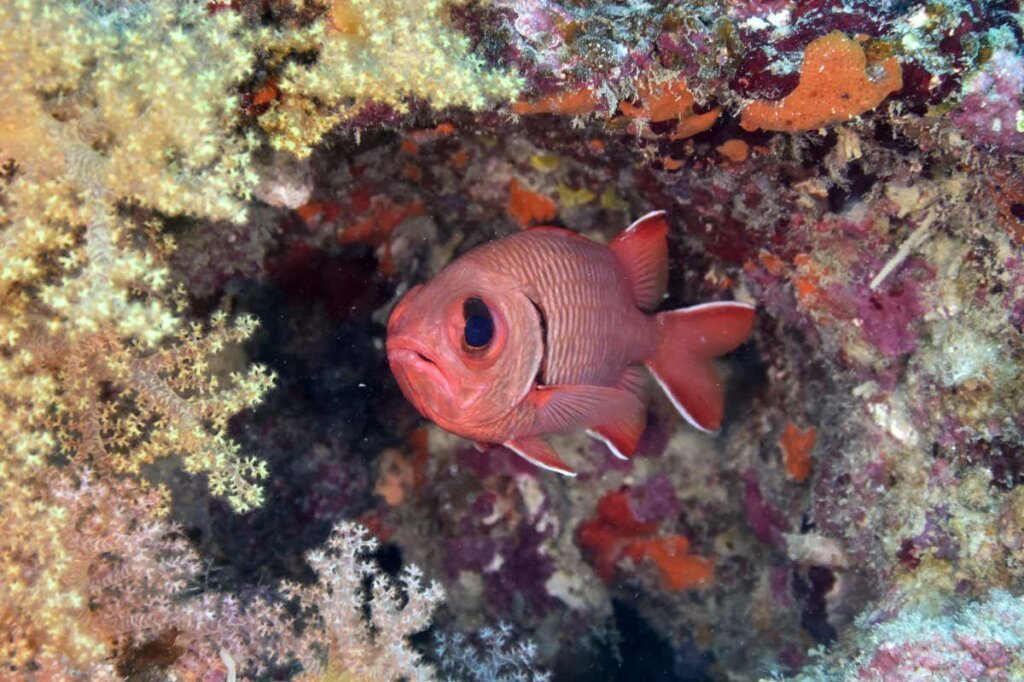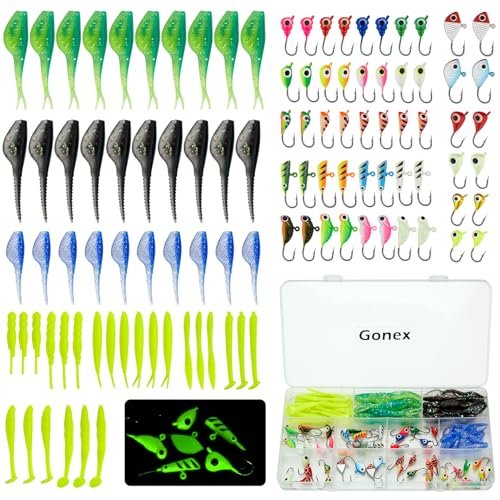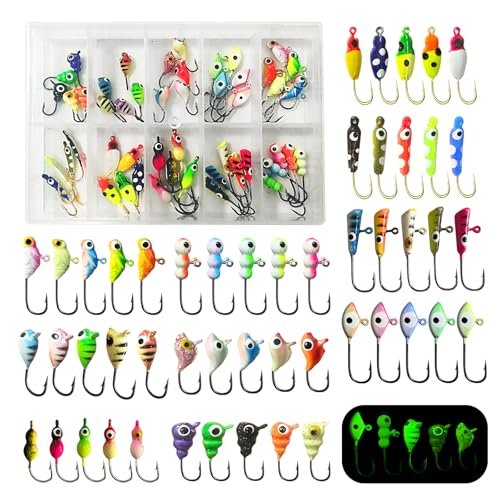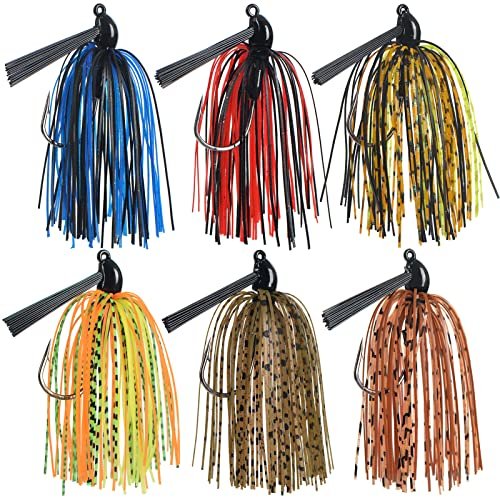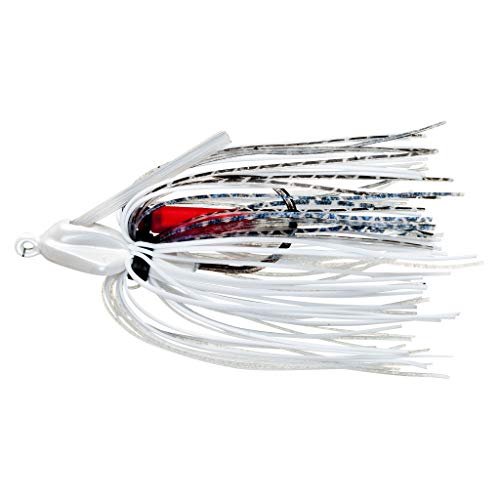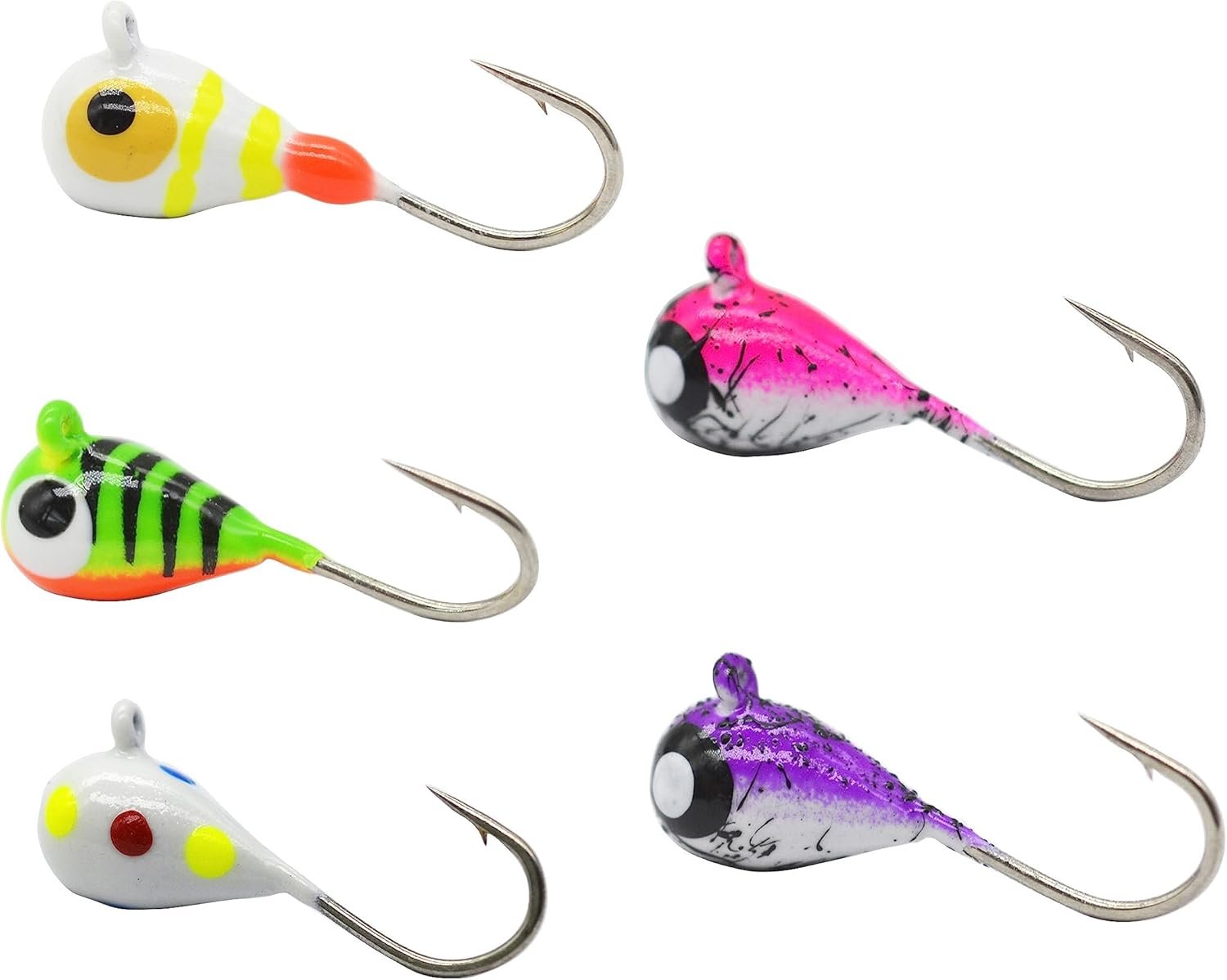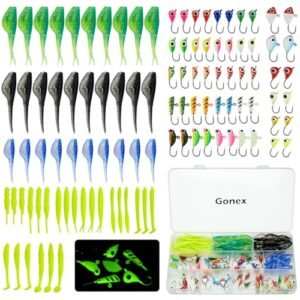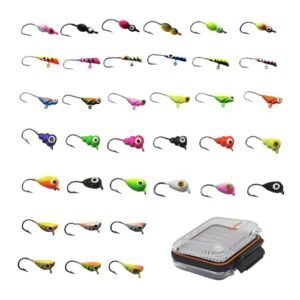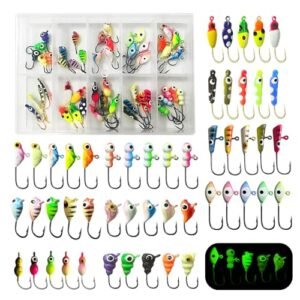Fish possess unique adaptations that allow them to see in the dark. Their eyes contain more rod cells than cone cells, which enhances their ability to detect light in dim conditions. Some species, like catfish, have evolved specialized sensors that detect vibrations and chemical changes in the water.
These adaptations help fish find food and avoid predators even in murky environments. While their vision isn’t as sharp as in daylight, these sensory enhancements make up for it. Understanding these abilities can offer insights into aquatic life and improve fishing techniques. Fish have remarkable adaptations that ensure their survival in various lighting conditions.
The Visual Capabilities Of Fish
Fish have unique visual capabilities that help them survive in various environments. Their eyes are adapted to see in different light conditions. This ability is crucial for hunting and avoiding predators.
Adapting To Darkness
Fish living in deep waters have special adaptations. These adaptations allow them to see in low light. Some deep-sea fish have large eyes. These large eyes capture more light, improving their vision in the dark. Others have a layer of tissue called the tapetum lucidum. This tissue reflects light back through the retina, increasing their ability to see in dim light.
Variations Across Species
Not all fish see the same way. Different species have different visual capabilities. For example, some fish see ultraviolet light. This helps them find food and mates. Others can detect polarized light. This ability helps them navigate and hunt more effectively.
| Fish Species | Visual Adaptation |
|---|---|
| Deep-sea Anglerfish | Large eyes, bioluminescence |
| Trout | Ultraviolet vision |
| Salmon | Polarized light detection |
These adaptations show how fish have evolved to survive. Their visual capabilities are a testament to their resilience and diversity.
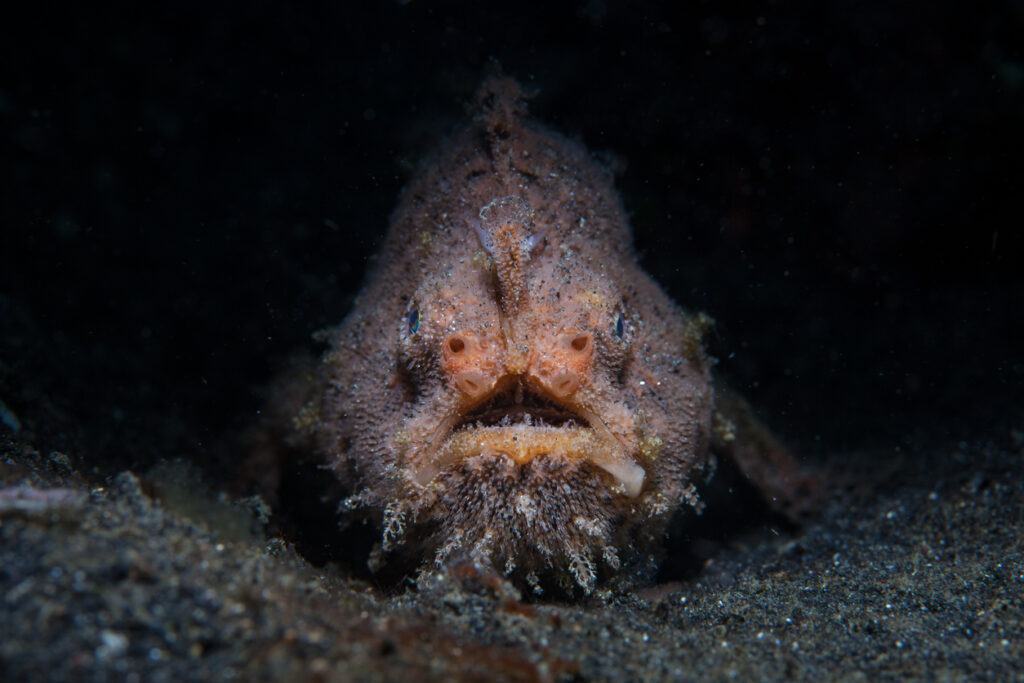
Aquatic Environments And Light Levels
Understanding how fish see in the dark starts with their environments. Light levels change greatly in different aquatic settings. Fish have adapted to these changes. Let’s explore how.
Deep Sea Realms
The deep sea is extremely dark. Sunlight does not reach these depths. Fish here have special adaptations.
- Bioluminescence: Some fish create their own light.
- Large Eyes: Many deep-sea fish have big eyes to capture more light.
- Sensitivity: Their eyes are very sensitive to the little light available.
These adaptations help fish navigate and hunt in darkness.
Murky Waters And Nocturnal Habits
Rivers and lakes often have murky waters. Light penetration is low here too. Fish in these environments also show unique traits.
- Lateral Lines: This helps fish sense vibrations in the water.
- Enhanced Smell: Strong sense of smell helps them find food.
Many fish are nocturnal. They hunt at night using these adaptations. They rely less on sight and more on other senses.
Photoreceptor Cells In Fish Eyes
Fish have unique eyes that help them see underwater. These eyes contain special cells called photoreceptor cells. These cells help fish detect light and see their surroundings.
Rods Vs. Cones
Fish eyes have two types of photoreceptor cells: rods and cones. Rods help fish see in low light conditions. Cones help them see colors in bright light.
Rods are more sensitive to light than cones. This makes rods perfect for seeing in the dark. Cones, on the other hand, help fish see different colors and details during the day.
| Photoreceptor Cells | Function | Light Sensitivity |
|---|---|---|
| Rods | Detect light and motion | High |
| Cones | Detect colors and details | Low |
Special Adaptations For Low Light
Some fish have special adaptations to see better in the dark. These adaptations make their rods even more effective. For example, some fish have a layer behind their retina called the tapetum lucidum. This layer reflects light back through the retina, giving rods a second chance to detect it.
Other fish have more rods than cones. This increases their ability to see in low light. Some deep-sea fish even have extra-large eyes to gather more light.
- Tapetum lucidum reflects light
- More rods than cones
- Extra-large eyes
These adaptations make fish excellent at seeing in the dark. They can find food and avoid predators even in the darkest waters.
Bioluminescence: Nature’s Night Vision
Bioluminescence is nature’s night vision for many sea creatures. This natural light helps fish see in the dark. It is an amazing survival tool. Fish use it to find food, avoid predators, and communicate.
Symbiotic Relationships
Some fish have special partnerships with bioluminescent organisms. These tiny creatures live on the fish’s body. They glow and help the fish see and hunt in darkness. The fish, in return, offers protection and food scraps. This is a win-win situation for both.
Communication And Attraction
Fish use bioluminescence to talk and attract mates. Different patterns and flashes send different messages. Some fish flash lights to warn others of danger. Others use light to draw in a mate. It is like a secret code only fish understand.
Bioluminescence helps fish navigate the dark ocean. It is their special tool for survival.
Fish Vision Vs. Human Perception
Fish and humans see the world differently. This difference is due to unique vision systems. Fish live in water, a darker environment. Humans live on land with brighter light. These differences shape how both species perceive their surroundings.
Differences In Color Vision
Fish and humans have different types of cells for color vision. Humans have three types of cone cells. These cells detect red, green, and blue light. This combination allows humans to see a wide range of colors.
Fish, on the other hand, can have up to four types of cone cells. This extra cone cell helps them see more colors, especially in murky water. Some fish can even see ultraviolet light, which is invisible to humans.
| Humans | Fish |
|---|---|
| Three cone cells | Up to four cone cells |
| Red, green, blue vision | Wider color range |
| No ultraviolet vision | Can see ultraviolet light |
Sensory Integration
Fish use more than just their eyes to sense their environment. They have a lateral line system. This system detects vibrations and movements in the water. It helps fish navigate and find food in the dark.
Humans rely mostly on their vision for perception. They do not have a lateral line system. Instead, humans use their sense of touch, hearing, and smell to complement their vision.
- Fish use lateral line system.
- Humans rely on vision and other senses.
Both fish and humans have adapted their sensory systems to their environments. These adaptations help them survive and thrive.
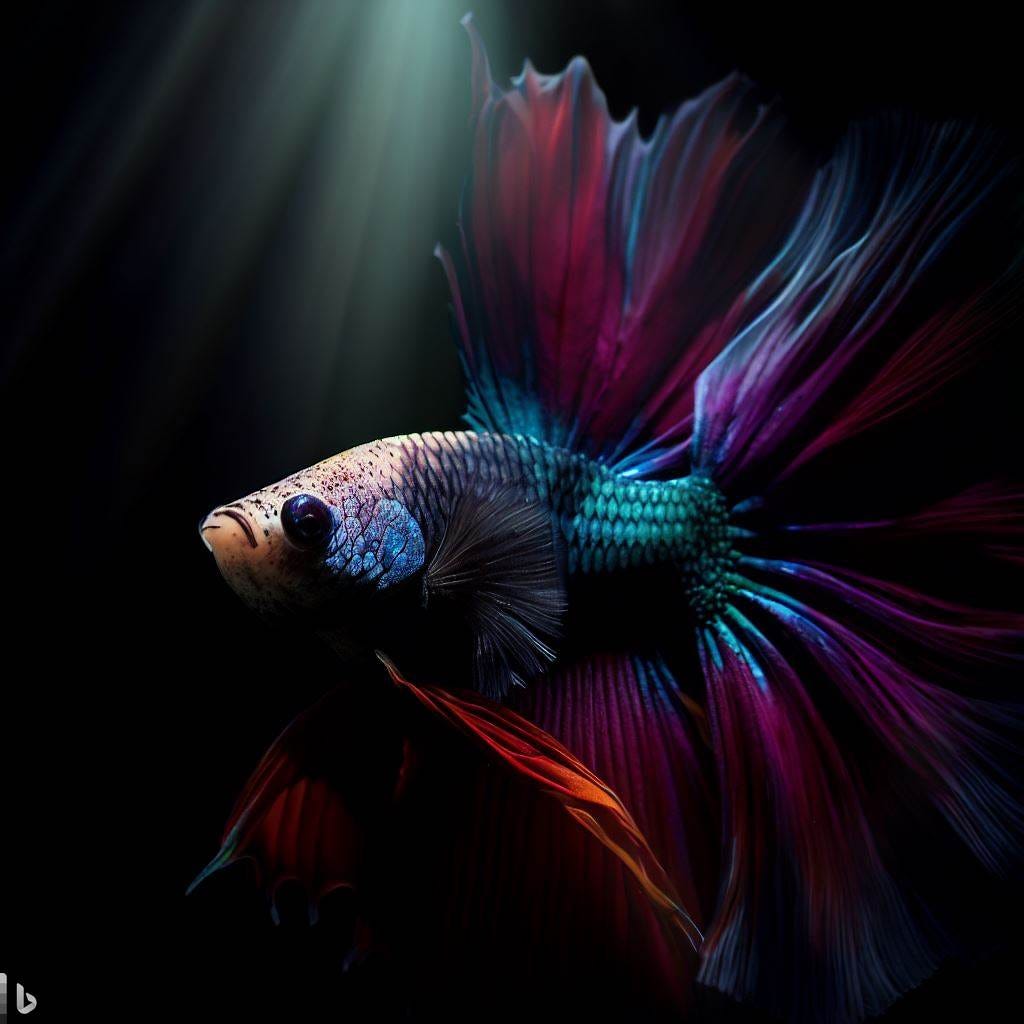
Credit: medium.com
Evolutionary Advantages Of Night Vision
Many fish species have developed the ability to see in the dark. This evolutionary trait offers numerous advantages in their underwater world. Fish live in environments where light is often scarce, especially in deep waters or murky habitats. Night vision enhances their ability to survive and thrive in such conditions.
Predator And Prey Dynamics
Night vision plays a crucial role in predator and prey dynamics. Predatory fish can hunt more efficiently in the dark. They use their enhanced vision to spot and capture prey that might feel safe under the cover of darkness. This ability gives them a significant edge over their prey.
Conversely, prey fish with good night vision can detect predators early. This allows them to evade and escape danger. The balance between predator and prey is tightly linked to their ability to see in low-light conditions.
Survival Strategies
Fish have developed various survival strategies thanks to night vision. These strategies are essential for their survival in different environments.
- Camouflage: Some fish blend into their surroundings to avoid predators.
- Nocturnal Feeding: Many fish feed at night to avoid daytime predators.
- Migration: Certain fish migrate at night to stay safe from predators.
Night vision helps fish in all these strategies. It’s a key factor in their ability to find food, avoid danger, and navigate their environments.
| Fish Type | Night Vision Benefit |
|---|---|
| Predatory Fish | Efficient hunting in the dark |
| Prey Fish | Early predator detection |
Research Methodologies
Understanding if fish can see in the dark requires various research methodologies. Scientists use different approaches to study fish vision. Let’s explore the experimental designs and technological advancements used in these studies.
Experimental Designs
Researchers design experiments to test how fish see in low light. These experiments often involve controlled environments.
- Scientists place fish in dark tanks.
- They observe fish behavior and responses.
- They use different light levels to test vision.
Researchers also compare fish from different habitats. This helps understand how fish adapt to darkness.
| Experiment Type | Purpose |
|---|---|
| Behavioral Observations | Study fish reactions to light changes. |
| Environmental Comparisons | Compare fish from light and dark habitats. |
Technological Advancements
Advances in technology help scientists study fish vision better. High-tech equipment allows detailed observations.
- Scientists use infrared cameras.
- They track fish movements in the dark.
- They use special lights to study fish eyes.
New imaging techniques show how fish eyes work. These technologies reveal details not seen before.
Using genetic analysis, scientists understand fish eye structures. This helps explain how fish see in dark waters.
| Technology | Use in Research |
|---|---|
| Infrared Cameras | Track fish in darkness. |
| Special Lights | Study fish eye responses. |
| Genetic Analysis | Understand eye structures. |
Conservation Implications
Fish have special ways to see in the dark. This ability is crucial for their survival. Understanding how light affects them helps protect their habitats. Conservation efforts can benefit from this knowledge.
Impact Of Light Pollution
Light pollution disrupts natural night cycles. It affects fish’s ability to find food and mates. Artificial lights can cause stress and disorientation. This impacts their feeding and breeding patterns.
Studies show light pollution affects fish behavior. It changes migration routes and feeding times. Fish rely on darkness for safety. Artificial light makes them vulnerable to predators.
Protecting Nocturnal Marine Life
Protecting nocturnal marine life is important. Implementing dark-sky policies can help reduce light pollution. Using dim, red lights can minimize impact. These lights are less disruptive to marine life.
Marine protected areas should consider light pollution. Enforcing no-light zones can help preserve natural habitats. Educating communities about light pollution is key. Awareness can lead to better practices and regulations.
| Action | Benefit |
|---|---|
| Implement Dark-Sky Policies | Reduces light pollution |
| Use Red Lights | Minimizes disruption to fish |
| Enforce No-Light Zones | Preserves natural habitats |
| Educate Communities | Promotes better practices |

Frequently Asked Questions
Can Fish See In Total Darkness?
Fish cannot see in total darkness. They rely on some light to detect their surroundings. Some species use other senses like lateral lines to navigate in the dark.
Is It Okay For Fish To Be In The Dark?
Yes, fish can be in the dark. Many fish adapt to low light conditions. Ensure a balanced light-dark cycle.
Do Fish Need Light At Night?
Fish do not need light at night. Darkness helps them rest and reduces stress. Use a timer for consistent light cycles.
Does Fish See In The Night?
Yes, many fish can see at night. They have special adaptations like larger eyes and light-sensitive cells to help them navigate in low light.
Conclusion
Understanding how fish see in the dark enhances our knowledge of aquatic life. Many fish have adapted to low-light environments. Their unique vision capabilities help them navigate and survive. By learning about these adaptations, we can appreciate the complexities of marine ecosystems.
Dive deeper into this fascinating topic to discover more.
